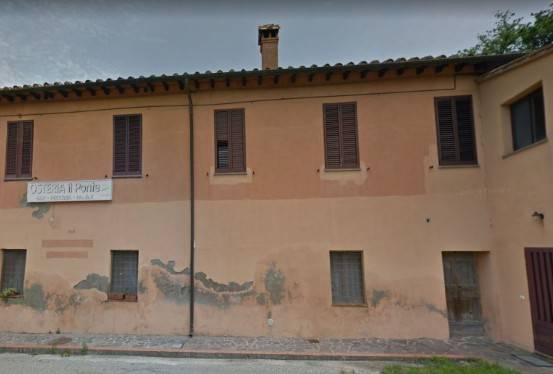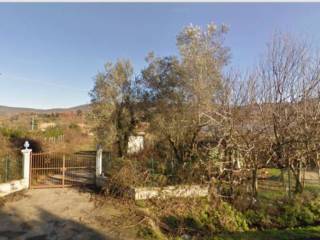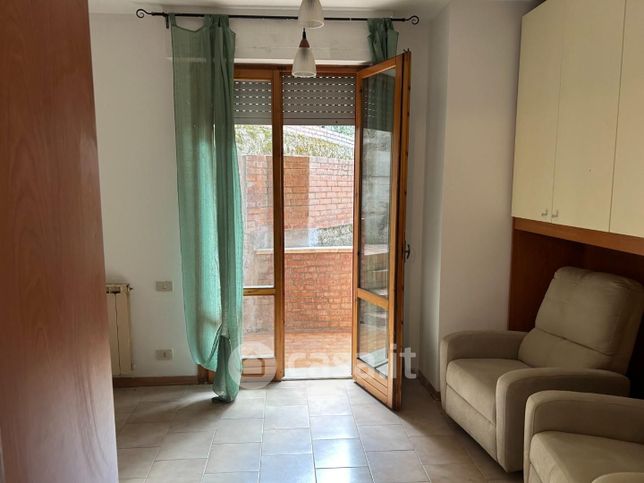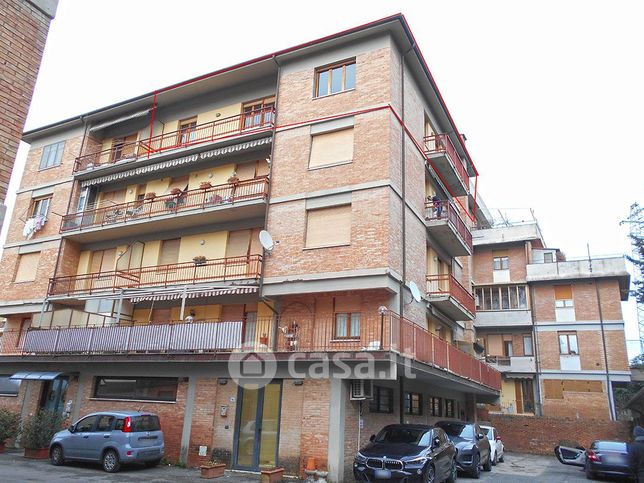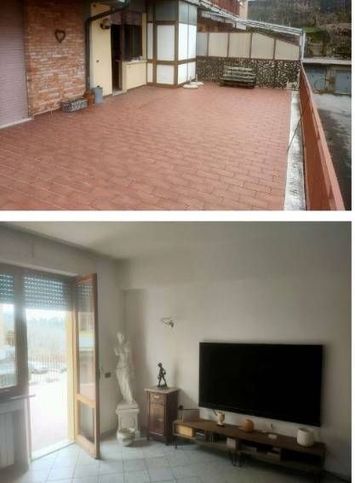The Castle stands in a dominant position on a hill 236 meters high from which Monteriggioni can be seen. It is still surrounded by a strong wall with cylindrical and angular bastions, on which a ramp runs that leads to the area in front of the access portal to the courtyard. This is an elaborate central courtyard with overlapping arches, a result of the 16th-century renovation, as are the portal that allows entry and the brick church located next to the fortress.Its existence is traced back to the 11th century when there was a castle with the court of the Lombards, built a short distance from the nearby castle of Monteriggioni to control the nearby Via Francigena. It passed to the bishops of Siena and then to the monks of Abbadia a Isola during the 12th century. It was destroyed by the Florentines in 1158, but the settlement was rebuilt. In 1265, right next to the current Via Cassia, a hospital was founded by Ghinibaldo dei Saracini, from whom the name of the locality derives. Ghinibaldo was the husband of Sapìa, mentioned by Dante (Purgatory - Canto Thirteen). From there, she would have observed the defeat of her fellow citizens during the battle of Colle di Val d’Elsa. Saracini held feudal rights over the castle and received large profits from trade, which he reinvested in the purchase of numerous surrounding farms. The castle was later ceded to the Municipality of Siena, which in 1271 sent a judge dependent on its Podestà, and the Ghinibaldi hospital was incorporated into the jurisdiction of the great Hospital of Santa Maria della Scala in Siena. In the 16th century, the castle passed to the Piccolomini family.The current building, organized around a beautiful central courtyard, is composed of elements from different periods, with a predominance of structures resulting from a 15th-century renovation. Although it has been remodeled several times, it clearly reveals its medieval origins in the massive and compact structure that surrounds the courtyard, renovated in the 16th century, in the masonry, and in the design of many openings. The small external church seems to have been named “Church of San Ruffiniano” and contains inside a marble plaque that was part of the 13th-century hospital complex located on Via Cassia. From the same documents, it appears that the stone column dividing the bifora (double window) of the bell tower also belonged to this complex. Inside, there is a spectacular and somewhat macabre relief depicting 4 angels and a girl. It dates from the 19th or early 20th century, and its meaning is still unclear. It is located behind the altar of the chapel, which is not accessible (unless you find the door open…).


